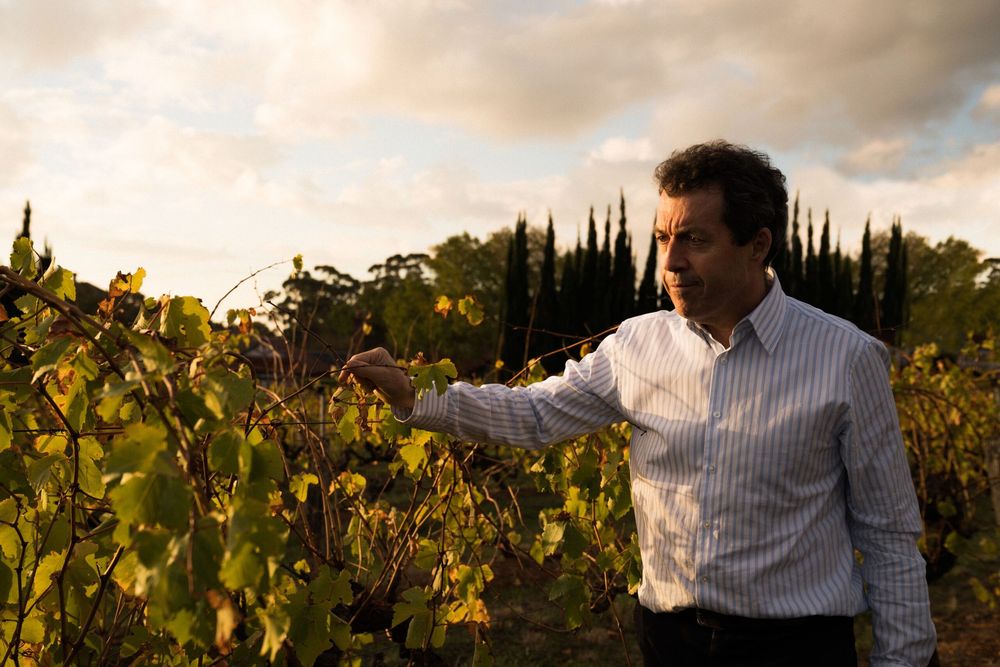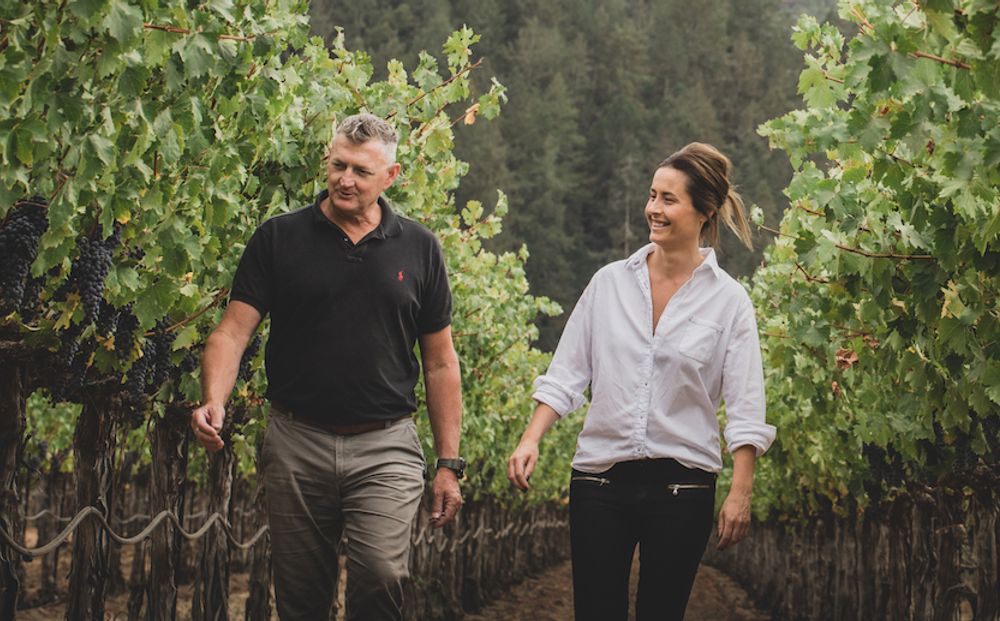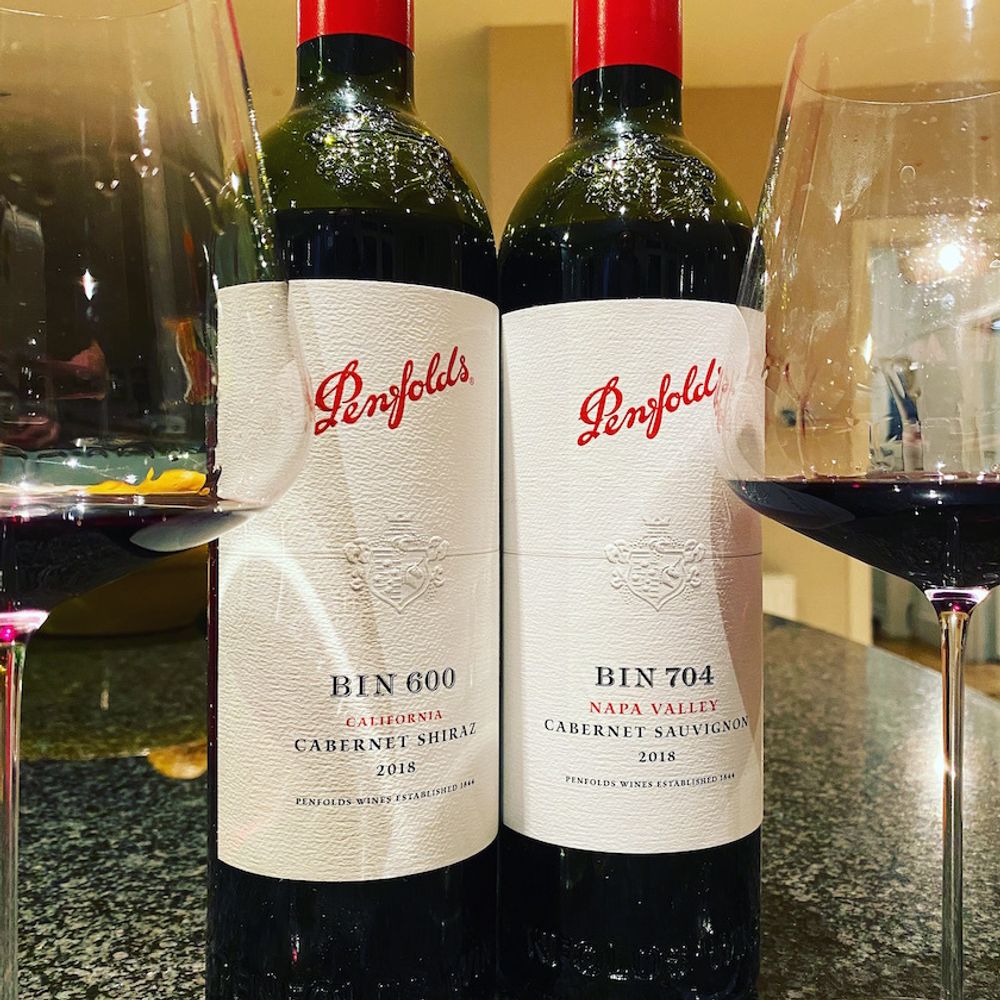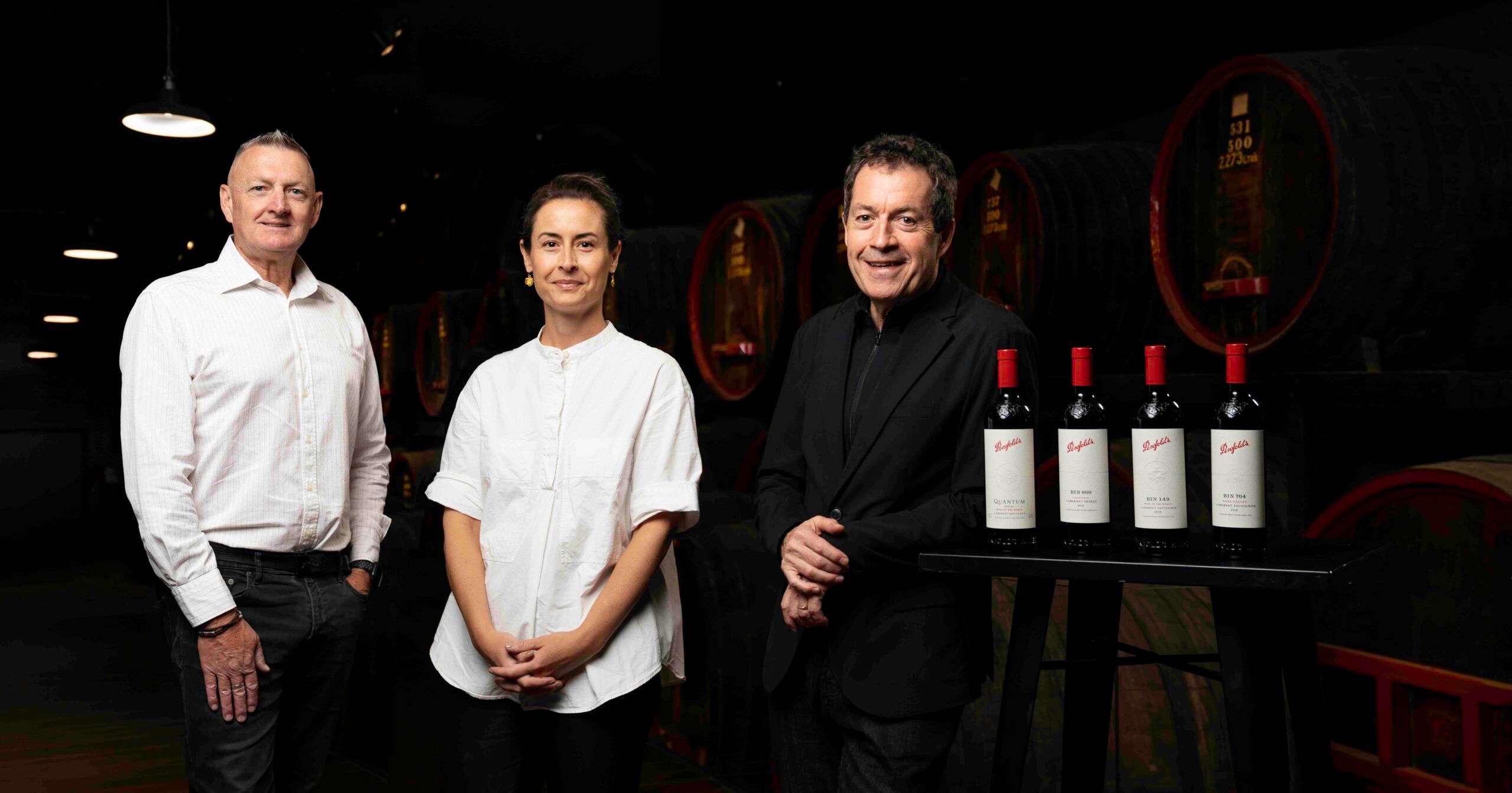There are four wines in this inaugural Penfolds California collection – two which are made purely from Californian fruit and two which are a blend of Australian and Californian wines.
It’s fair to say that Peter Gago has a pretty thick skin – thicker than a Shiraz berry at veraison – but what would you expect from an Aussie grafted onto Geordie rootstock? Here’s a man who’s only the fourth person to hold the post of chief winemaker for Penfolds since the first vine was planted by Dr Christopher Penfold in 1844, and when he took the post 19 years ago he said he wasn’t going to change anything.

Peter Gago, Napa Valley
Since then, of course, he has overseen a great many changes, the latest being the release of four wines in the inaugural California Collection, which follows other projects that have raised eyebrows – the G series, for one, and launching a Champagne in Champagne for another, which was always going to draw flak from Aussies given that Gago cut his teeth on making sparkling Australian wine… in Australia.
He says that he is undeterred by criticism, though, and points to the fact that Grange was universally panned when it was released in the 1950s. G3, meanwhile, sold out in the four days after it was released at £2500 a bottle – so what do we know? It is highly unlikely then that any criticism levelled at Penfolds California is going to stop him in his tracks.
So what’s driving the Penfolds California project?
“There is a finite tonnage of top-quality Cabernet Sauvignon available to us in South Australia, yet demand continues to grow,” Gago tells me, “Penfolds’ next 175 years will seek fruit of the appropriate quality and style beyond other States… now to other countries.”
So as Penfolds’ corporate parent Treasury Wine Estates accumulates land around the globe – in California, Champagne and now Bordeaux – so the winemaking team adds its knowhow in this viticultural version of Risk.
One also suspects that the California wines are fuelled by Gago the iconoclast, as much as Gago the winemaker – to challenge preconceptions and take people out of their comfort zone.
“What a great way to offend Americans, suggesting their vinifera is somehow inferior to Australia!” quips one head of an Australian winery on Gago’s LinkedIn page. And so on and so forth.
The truth of the matter is, that Penfolds California started long before Gago took over the reins as chief winemaker.

Penfolds at Camatta Hills, Paso Robles
How the project works
“Penfolds (Wine Group) started exploring California, back in the 1980s with a major shareholding investment in Geyser Peak Winery. This saw the first Penfolds winemakers making wine on Californian soil, we returned in the 90s with vine cuttings from some of Penfolds most esteemed South Australian vineyards,” Gago says.
Cuttings came from Penfolds’ Heritage Selections programme of the 1980s that identified the single vineyards, blocks and ultimately single vines that produced the best quality fruit. These cuttings were then planted on land the company bought at Camatta Hills, Paso Robles in 1997. So what has happened to the fruit in the intervening years?
“Experimental Penfolds/Camatta Hills vintages occurred in 2006 and 2007. These bottlings were never commercially released by Penfolds; however, they were kept for historical reference.”
Just as in Australia, where Penfolds sources fruit from right across the country, in California the focus has been on Diamond Mountain District AVA, Howell Mountain and Rutherford, but also from Calistoga, St. Helena, Napa Valley and (going forward) Yountville.
To make Bin 149 and Quantum, finished Cabernet Sauvignon and Shiraz wine (not juice) is shipped from South Australia to California in 1 cubic metre stainless steel pallet tanks, encased in protective timber, and in temperature-controlled containers, with blending, maturation and bottling then occurring in Napa. Even the barrels are shipped in from Australia.
But with sustainability such a key issue is this project in keeping with the times?
“This project is certainly in keeping with the times. In fact it’s ahead,” Gago says, “To a certain extent sending South Australian wine offshore in temperature-controlled stainless-steel vessels is actually relatively more ‘sustainable’ than sending it offshore in glass bottles. Albeit, currently only 14.9% of Bin 149 (South Australian A1-Grade Cabernet Sauvignon) and 13% of Quantum (South Australian A1-Grade Shiraz).”
“However, it’s the sustainability of our local grower relationships that also propels our Californian aspirations. Growers of A1-Grade South Australian Shiraz and Cabernet will now also be able to target Bin 149 and Quantum – if the style of their fruit in a given harvest doesn’t suit the styles of Grange, Bin 707, etc. – i.e. a wider and more sustainable means of managing agricultural risk at A-Grade.”

Stephanie Dutton and Andrew Baldwin, the Penfolds winemakers overseeing the project
There are four wines in the inaugural collection: Bin 600, a Cab-Shiraz blend (California appellation); Bin 704, Cabernet Sauvignon (Napa); Bin 149, Cabernet Sauvignon (American appellation/ ‘Wine of the World’) and Quantum Bin 98, Cab-Shiraz (American appellation/ ‘Wine of the World’).
So how have the names and Bin numbers come about?
“Quantum represents a Quantum Leap forward for Penfolds. The first step taken some 20 years ago in 1998 when vineyards were first planted on Californian soil. Quantum Mechanics dabbles with time and space … as does this blend,” says Gago. “Bin 149 is because 14.9% of Australian wine components are added to this blend. Bin 704 is a hemisphere reversal of Penfolds’ famous Australian Cabernet Bin 407, and Bin 600 is the original name of the Camatta Vineyard – when it was first purchased it was called Creston ‘600’ Ranch.”
Gago confesses that even he was surprised by the quality of the resulting wines which is fair comment – the two I tasted were exceptional (notes follow) – and I suspect the unavailability of the Quantum and Bin 149 for tasting is down to cost. Quantum weighs in at a pretty chunky price at £545 per bottle which is 10% higher than Grange is in the UK.
When I ask how such a high price for a debut wine can be justified, the answer I get is about the amount of groundwork, time and guidance from their Napa network which “You cannot put a dollar figure on this value, expertise or worth.” Well £545 feels like a dollar figure!
There is also a nagging doubt in my mind as to whether shipping vine cuttings over 8,000 miles around the world and then shipping finished wine from Australia to California and back again really is in step with the times. But then you have to see this as part of Penfolds’ overall vision to make top wines true to a Penfolds template from luxury winemaking regions around the world, and they assure us that, as a corporate entity, they are mindful of their own sustainability.
So how are the wines tasting?

I admit I approached these wines with some scepticism but I confess I was so impressed – these are truly outstanding wines that will be fascinating to follow as vintages progress and as fruit-sourcing and winemaking adapts. Penfolds needed to do something unique with this Californian wine project to justify the effort and they have really pulled the rabbit out of the hat – successfully merging two distinct styles. Yes, it is California but the winemaking is unmistakably Penfolds with wonderful complexity, structure and balance to the wines. Hat respectfully tipped.
Masters of Wine students you need to do your research because the examiners are going to have some fun setting these in a blind tasting.
Bin 600 Cabernet Shiraz, California, Penfolds 2018
“Familial and inaugural!” run the tasting notes for the Bin 600. Indeed.
Fruit for this 78% Cabernet Sauvignon 22% Shiraz blend comes from Camatta Hills and Sonoma. The wine has been aged for 16 months in American oak – 40% new, 60% one-year-old and clocks in at 14.5% abv.
To look at the wine is crimson-opaque. The nose is rich and spicy, fruity and enticing; aromas include blackberry, bay leaf, coconut husk with a slight minty kick; the palate is medium weight, open-textured, with firm acidity keeping the waves of flavour in check – cassis, dark chocolate Bounty bar, black cherry, rare beef. Liking this a lot – it has Napa richness and intensity but with terrific freshness, and a bright quality at its core. £45 RRP.
Bin 704 Cabernet Sauvignon, Napa Valley, Penfolds 2018
Where Bin 600 is the first California appellation wine, Bin 704 is an outstanding first foray into Napa from Penfolds, coinciding as it does with the brilliant 2018 vintage. It has all the concentration and richness you expect of Napa with a vibrant, fresh, sleek quality that reeks of classy winemaking, quality fruit and perfectly-seasoned French oak.
On the eye it is deep blood red with crimson edging; the nose is a blast of Cabernet fruit, dark chocolate, mace, currants, tar; the palate is lithe with silky, fine-grained tannins, bright acidity, flavours tightly-knitted, refined and structured. There’s a pomegranate bite, old oak and coconut water on the sleek finish.
Penfolds calls this a ‘mirror image’ of Bin 407 but it is also a stable mate to the Californian Bin 600 which has undergone similar vinification, the main difference being this has been matured in French rather than American oak. £60 RRP
Quantum Bin 98 retails for £545, Bin 149 for £125. The wines will be available from Berry Brothers and Harvey Nichols.
































